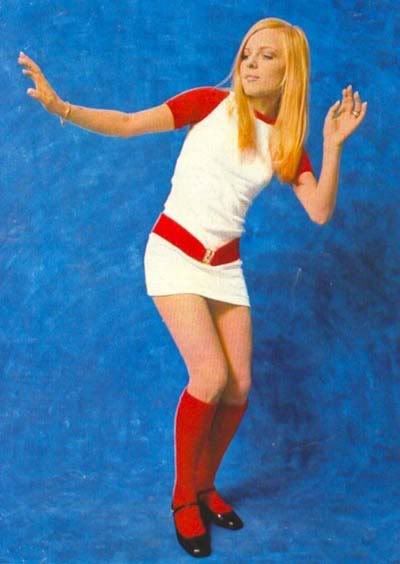
Tiny Yong (born Thien Juong Ton Hu Thi on February 8th 1944) was born into a small family in Phnom Penh, Cambodia. Her family was Vietnamese but had settled in Cambodia at the time of her birth. Thien Huong's family moved back to their homeland of Vietnam. However, their stay there would be brief due to increasing tensions between North and South Vietnam in the late 1950s. Thien Juong and her family moved to France when she was a teenager. Her father, who was a doctor, resumed his medical career there, while her mother opened a Vietnamese restaurant.
Young Thien had set her sights set on becoming a performer. She began her career by acting in local theatre productions and cabaret. Her television debut came in 1961, with an appearance as Tai-Au in the film Marco Polo, and she followed it shortly afterwards in Le jeu de la verité. In both films, credits gave her name as Thien-Huong. In 1962 she duetted with Jean Philippe on Parfum celeste and sang on the soundtrack of the film L’oiseau de paradis.
She was spotted by Henri Salvador in 1963. The French star was eager to add more females to the roster of his Disques Salvador label. Henri signed her to his record label almost instantly, where her great choice of material and sweet vocals delighted yé-yé fans. This was the launch in her career that she needed.
Renamed Tiny Yong, the singer cut her first EP that year. It led with En rêve, a version of Roy Orbison’s In dreams, but Tais-toi petite folle – a cover of the Shirelles’ Foolish little girl – is generally regarded as the highlight of the release. Salvador himself helped write both of the other tracks on the EP. With frequent spins on the hip Salut les copains radio programme, the release became a chart hit in France.
Tiny continued making albums and taking small film roles here and there until she eventually just faded away the public eye. Not much is known about her after a few last appearances in a crime series known as Allô police on French television in the 1970's. It's strange how such a large majority of yé-yé girls disappeared into obscurity as soon as the Sixties had ended.



cute and innocent, haha.
ReplyDeletecool!suppin bro :)
ReplyDeletecheck both my blogs are interesting! ;)
she's cute! and she seems to like dogs!
ReplyDeletei don't know about the last one but she looks good on the second video.
good videos
ReplyDeletefascinating page you have bro
ReplyDeletewow great blog
ReplyDeletevery well put post :)
ReplyDeletehaha this music has something ^^
ReplyDeletenice music, but I dont want it hear everytime ^^
ReplyDeleteyou my friend good some serious posts! >=(
ReplyDeletecheck my poll, every vote is helpful. He said its gonna be huge.
smoochies n' poopies :*
great music thanks for sharing
ReplyDeleteoh, she's good!
ReplyDeleteShowing my daily support I REALLY need yours aswell!
ReplyDeleteShe is small and adorable. Music's not too shabby either :D
ReplyDeletelol good post bro
ReplyDeletecool videos!
ReplyDeletethanks for the inspiration!
ReplyDeleteFollowing you. And I check every day. Hope you can too:
ReplyDeletehttp://saveithere.blogspot.com/